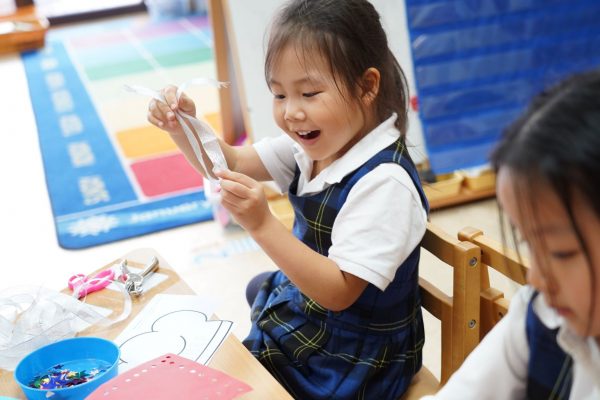Wellbeing is defined by the Oxford English Dictionary as:
‘The state of being comfortable, healthy, or happy’.
However, it is important to realise that wellbeing is a much broader concept than moment-to-moment happiness. While it does include happiness, it also includes other things, such as how satisfied people are with their life as a whole; their sense of purpose, and how in control they feel.

The importance of wellbeing has been widely acknowledged over the past twenty years by psychologists and is increasingly referred to in our daily lives. We are ever more aware of how we feel, how the world around us and our interactions impact upon us. More and more, we spend time and money on improving and investing in our wellbeing. We use the umbrella term to capture many aspects of our emotional selves. However, the concept itself is surprisingly complex. In a recent study published from the University of Nottingham (Longo, Y., Coyne, I., & Joseph, S. (2017). The Scales of general well-being. Personality and Individual Differences, 109, 148-159.), the similarities and differences in the six most widely used theoretical perspectives on well-being were examined, identifying fourteen distinct and recurring constructs that are used to describe wellbeing:
14 indicators to describe wellbeing
Happiness feeling happy and cheerful
Vitality feeling energetic/full of energy
Calmness feeling calm/relaxed
Optimism being optimistic and hopeful
Involvement feeling completely involved and engaged in what you do
Awareness being in touch with how you feel
Acceptance accepting yourself the way you are
Self-worth liking yourself
Competence feeling highly effective at what you do
Development feeling you are improving, developing, advancing
Purpose having a purpose and a mission in life
Significance feeling that what you do is worthwhile
Congruence feeling that what you do is consistent with how you see yourself
Connection feeling close and connected to the people around you
What’s needed to support children’s wellbeing?
1
The conditions to learn and develop
Children need to be given the conditions to learn and develop. This includes cognitive and emotional development, fostered through access to play in the early years and high-quality education in school, and physical development, for example through a nutritious diet. School is a key area of children’s lives where experiences vary greatly, and negative experiences have a significant impact on wellbeing.

2
A positive view of themselves and an identity that is respected
Children need to see themselves in a positive light, and deserve to feel, and be, respected by all adults and other children. Evidence shows that how children feel about their appearance, whether they are being bullied, and whether they believe that their voice is being heard and opinions respected, are key drivers of their wellbeing.
3
Have enough of what matters
Children’s wellbeing is affected by ‘having enough’ and ‘fitting in’ rather than being rich or accumulating material goods purely for its own sake.
4
Have positive relationships with family and friends
Children need to see themselves in a positive light, and deserve to feel, and be, respected by all adults and other children. Evidence shows that how children feel about their appearance, whether they are being bullied, and whether they believe that their voice is being heard and opinions respected, are key drivers of their wellbeing.

5
A safe and suitable home environment and local area
Children need safe and suitable environments at home and in their local area. Where children are unhappy in these environments, often through feeling unsafe, feeling that they have a lack of privacy, or feeling that their home or local area has inadequate facilities, this has a strong association with lower levels of wellbeing.
6
Opportunity to take part in positive activities to thrive
A healthy balance of time use is as important for children as it is for adults. The need for a balance that suits the individual needs of children means that they should be actively involved in decisions about how they spend their time.

Measuring wellbeing and involvement
“If there is a consistent low level of well-being and or involvement, it is likely a child’s development will be threatened. The higher the levels of well-being and involvement we can achieve for a child, the more we can add to the child’s development. Involvement means that there is intense mental activity, that a person is functioning at the very limits of his or her capabilities, with energy that comes from intrinsic sources. One couldn’t think of any condition more favourable to real development. If we want deep level learning, we cannot do without involvement”. Professor Ferre Laevers, Centre for Experiential Learning, Leuven University Belgium.
Developed in 1994, the Leuven Involvement Scale has been used globally as a measure of wellbeing and involvement. A five-point scale is used by practitioners as they screen a group of children within a learning environment; a score of 1 indicating low levels and 5 indicating high levels. The reasoning behind the development of the scale was a belief in the need for a monitoring system which would detect children who would not prosper in the setting, thereby providing evidence to support an adaptation in the approach taken and consideration of the actions to bring the child back on track.
By asking the question of ‘how is each of the children doing?’ we consider:
1
Wellbeing tells us to what extent the interactions between the child and setting lead to the fulfilment of the child’s basic needs. Children in a state of wellbeing feel like fish in water. The prevailing mood in their lives is pleasure, they have fun, enjoy each other’s company and feel ok in their environments. They radiate vitality as well as relaxation and inner peace. They have an open and receptive attitude towards their environment. They are spontaneous and feel comfortable in all sorts of situations, truly being themselves. A state of wellbeing is more likely to occur when the child has self-confidence, self-esteem, resilience and is well in touch with his or her own feelings.
2
Involvement tells us how much the child is engaging in activities and how challenging our approach is. Involvement is what we observe when children are intensely engaged in an activity. Characteristics of involvement are: extreme concentration, uninterrupted attention, being totally absorbed, unaware of time; s high level of motivation, interest, fascination and perseverance; an intense mental activity, vivid sensations and an embodied sense of meaning; a deep satisfaction stemming form the fulfilment of the exploratory drive; operating at the very limits of one’s capabilities (the zone if proximal development). With all these characteristics, we consider involvement as one of the most direct and reliable indicators for deep-level learning.

When these two conditions are fulfilled, we know that both the social-emotional and cognitive development of the child is secured.
Refernences:
- https://www.mentalhealth.org.uk/blog/what-wellbeing-how-can-we-measure-it-and-how-can-we-support-people-improve-it
- https://www.psychologytoday.com/intl/blog/what-doesnt-kill-us/201708/what-exactly-is-well-being.
- Adapted from The Good Childhood Report, Promoting Positive Wellbeing for Children: https://www.childrenssociety.org.uk/sites/default/files/tcs/promoting_positive_well-being_for_children_final.pdf
- Adapted from Leavers. F, Moons, J & Declerq. B: A Process-Oriented Monitoring System for the Early Years (POMS) 2012





